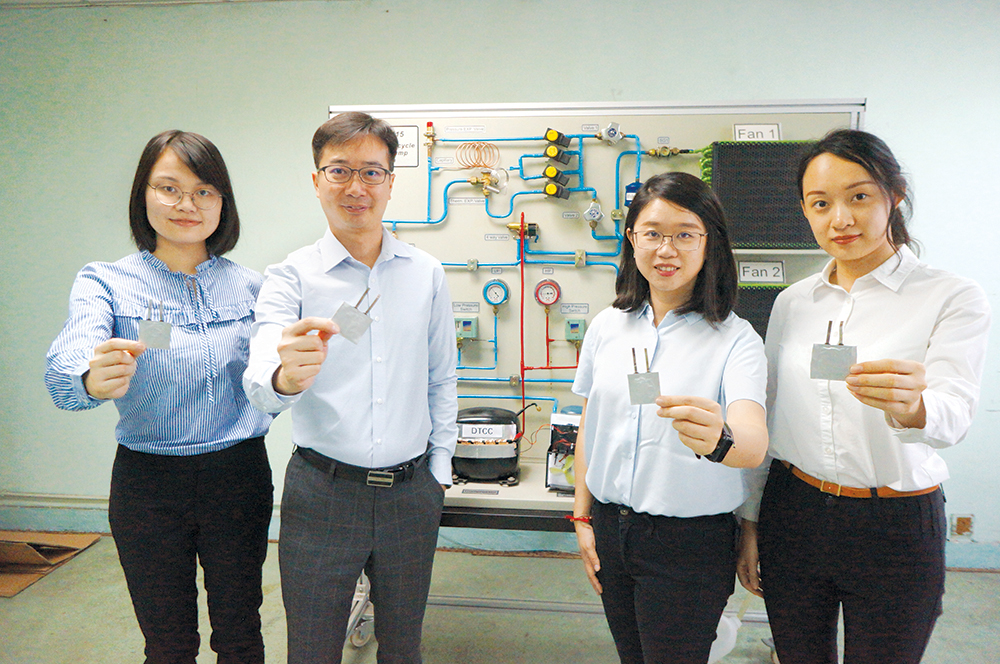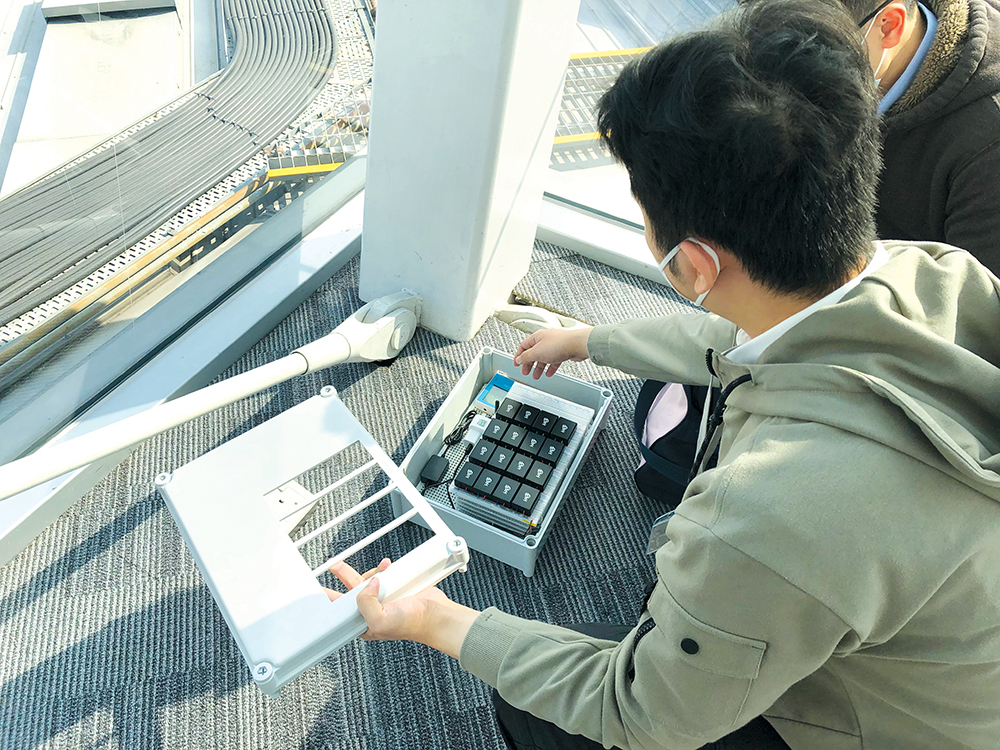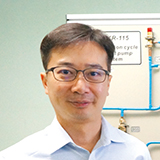May 2021 | Volume 22 No. 2
Invention Turns Waste Heat into Electricity
More than 60 per cent of the electricity generated by power plants and industrial processes is lost as waste heat, and more than half of that is low-grade heat that is difficult to recover. Dr Tony Feng Shien-Ping of the Department of Mechanical Engineering has broken through these barriers with a new approach to capturing this heat.
Until now, semi-conductors have been the main tool for waste heat recovery, but they are not effective when temperatures drop below 100 degrees Celsius. Semi-conductors generate electricity based on the temperature differences – or fixed thermal gradient – between the heat source to which they are attached and the outside environment.
Dr Feng’s approach is to come at the problem from a different angle. Rather than the thermal gradient, he has tapped into the thermal cycle of heating and cooling using a direct thermal charging cell (DTCC). He and his team apply chemicals to the DTCC that capture the heat and can also restart the heating process when the device cools down, making it self-regenerating. Most importantly, their approach works at temperatures as low as 30 degrees Celsius.
“Other researchers have studied electrochemical heat converters, but they don’t have this self-regeneration function so their converters might only be able to be used once or need external electricity input,” he said.
The advantages and applications of this approach are manifold. Not only can it recover low-grade heat for power generation, it can also be done using thinner, lighter devices than semi-conductors. One slim cell is all that is needed to regulate the thermal cycle, with graphic oxide applied on one side, a conductive polymer on the other and saltwater in the middle.
“Our cell is environmentally friendly because it is degradable and disposable, unlike a lithium battery. It is also much cheaper,” Dr Feng said.

Dr Tony Feng (second from left) and his research team.
Industry partners
The findings have been reported in Nature Communications and received numerous awards, including being named best business start-up in the Institution of Chemical Engineers Global Awards 2020 and being highly commended at the same event for energy saving.
Dr Feng and his team also have a start-up and are working with partners to further test and commercialise the DTCC. The start-up is called High Performance Solution and its key technology is a paste containing the chemicals that regulate the DTCC.
Their first industrial partnership was with Techskill (Asia) Ltd (Hong Kong) to recover waste heat from an HVAC (heating, ventilation and air conditioning) system and use that to generate electricity. Testing got underway in 2020 but was interrupted by the COVID-19 pandemic, however, it has shown promising results to date.
Another partnership is Brilliant Optronics in Taiwan, where the manufacturing site of High Performance Solution is based and where Dr Feng hails from. Here, they are working on an electro-chromatic window that changes colour or darkens under summer sunlight to keep out the heat. The window needs electricity to function, which the DTCC could provide by converting heat from sunshine (making it different from a solar cell that uses light for power generation). Tests are being carried out in Kaohsiung this year.
Skin power
Tests are also underway to see whether the DTCC can recover body heat, in collaboration with EcoFlow, a company started by a former Research Associate of Dr Feng’s. Human skin temperature is about 32 degrees Celsius (a bit cooler than our inner body temperature) and Dr Feng reckons this should be enough to power low-power sensors.
“We want to do this because if someone needs a health monitor attached to their skin, the next person probably won’t want to use it so it has to be thrown away. It also needs a battery which is environmentally unfriendly. So we are working on a smart patch that combines the cell and sensors to provide a greener solution,” he said.
Early this year, the HKSAR Government’s Electrical and Mechanical Services Department also brought in the start-up to test the DTCC’s reliability in converting heat to electricity under different weather conditions. The test is being carried out on the Department’s green roof and will run for one year.
High Performance Solution is led by Dr Feng’s former student and HKU PhD graduate, Dr Vivian Huang, and he continues to work closely with her and her team. “I spend a certain amount of time in this company because it is related to my research. It makes me excited to see how academic research can have real-world applications,” he said.

The Electrical and Mechanical Services Department of the HKSAR Government brought in the start-up to test the reliability of the direct thermal charging cell in converting heat to electricity under different weather conditions.
Our cell is environmentally friendly because it is degradable and disposable, unlike a lithium battery. It is also much cheaper.

DR TONY FENG SHIEN-PING

